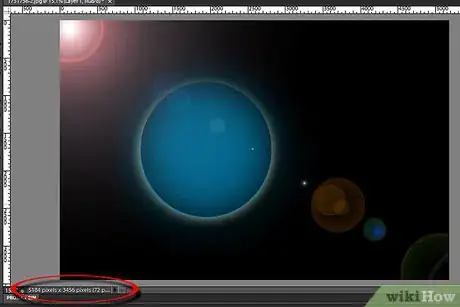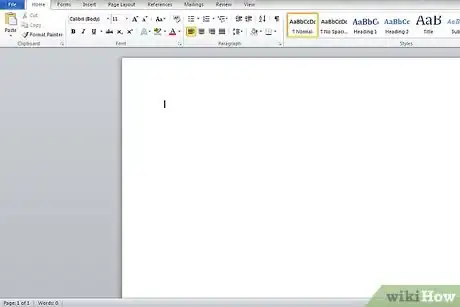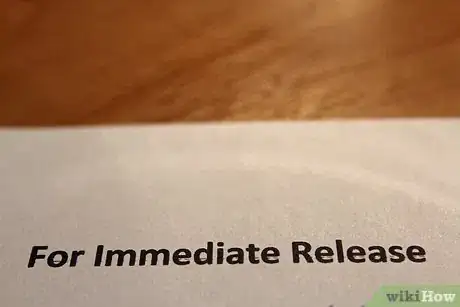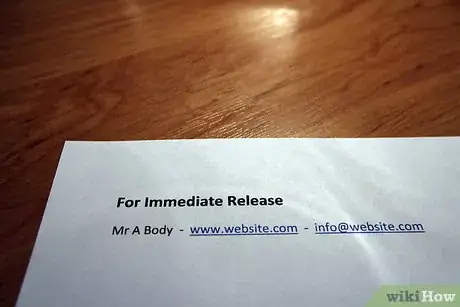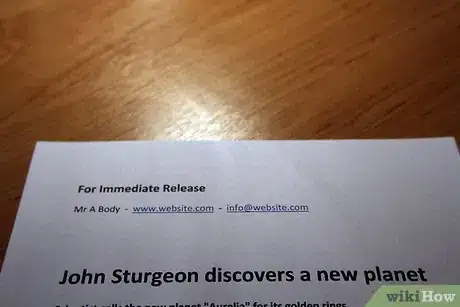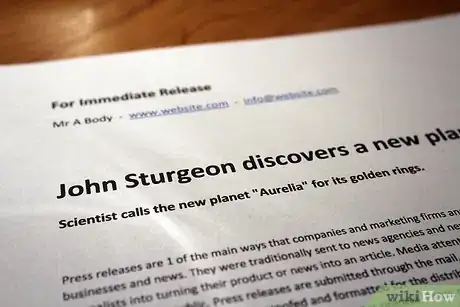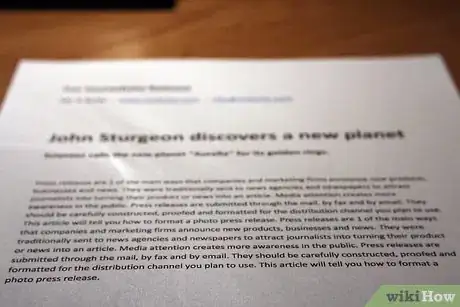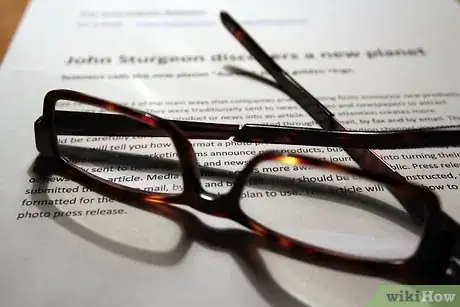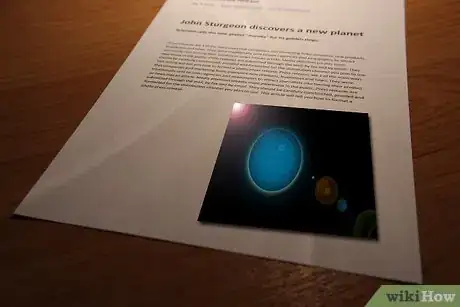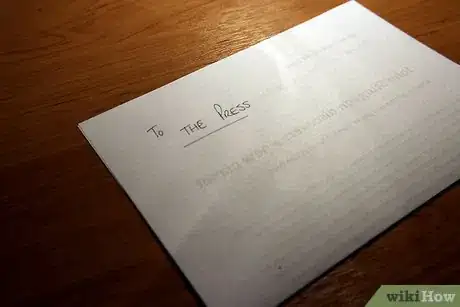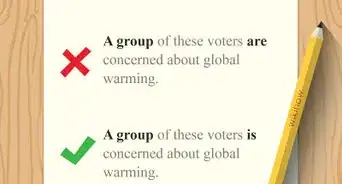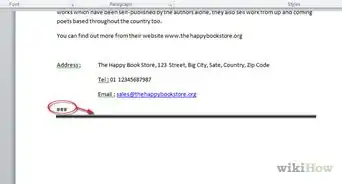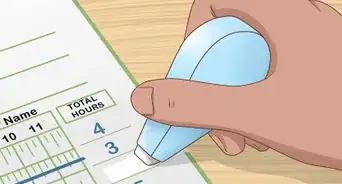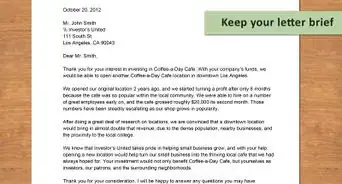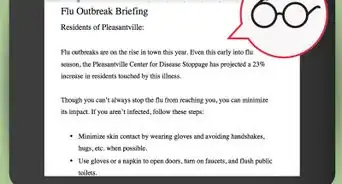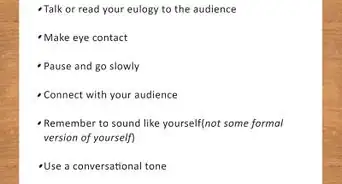wikiHow is a “wiki,” similar to Wikipedia, which means that many of our articles are co-written by multiple authors. To create this article, volunteer authors worked to edit and improve it over time.
This article has been viewed 86,664 times.
Learn more...
Press releases are 1 of the main ways that companies and marketing firms announce new products, businesses and news. They were traditionally sent to news agencies and newspapers to attract journalists into turning their product or news into an article. Media attention creates more awareness in the public. Press releases are submitted through the mail, by fax and by email. They should be carefully constructed, proofed and formatted for the distribution channel you plan to use. This article will tell you how to format a photo press release.
Steps
-
1Edit your photograph before placing it within your press release. The size should be more than 200 x 200 pixels. It should also be in jpg format with at least 72 dots per inch (dpi).
- Save the image with a name that describes what the photo and press release are about in 4 to 5 words. For example: "John Sturgeon discovers new planet."
- Write a caption for the photo that credits the photo to the person who took it, explains what it is about and includes the correct spelling of all the people featured in the photograph. You can place this below the photo near the end of your press release formatting.
-
2Begin composing your press release in a word processing program. Even if you intend to send your press release by email, it will be easier to proof and edit in Word or a similar program.Advertisement
-
3Type the heading "For Immediate Release" at the top left corner of the page. Bold this text. Do not put a date in the future for this document's release, or it is likely to be ignored in favor of current news.
-
4Include your contact information just below the bold heading. You should include your name, address, email address, phone number, fax number and website. This is essential should anyone want to research your release or write an additional story.
-
5Write your headline. In a short phrase, between 4 to 8 words, the headline should describe the subject of the release in an exciting way. Bold the headline. For example: "John Sturgeon discovers a new planet."
-
6Write a subhead that describes the newsworthy nature of your release in more detail. Put the subhead in italics. For example: "Scientist calls the new planet "Aurelia" for its golden rings."
-
7Write the body of the press release. Aim to write 400 words. The body should give the benefits of the subject and encourage journalists to contact you for more information.
- The introductory paragraph should announce the most newsworthy elements of the story. Additional paragraphs will go into detail, stating evidence, circumstances and other information. Each paragraph should be between 3 to 5 sentences long.
- If you plan to submit online, you may want to further limit your word count. Most electronic press releases are shorter than those that are mailed.
-
8Edit your press release, especially the body, so that it is clean and uses no more words than are necessary. Look for grammar and spelling errors, and ask someone else to proof your work.
-
9Place your photo with your press release according to the type of distribution channel you are going to choose. This includes mail, email and fax.
- Submit the photo or photos on a separate page if you plan to send a media kit. Most mailed press releases include reviews, photos and biographies along with their press releases. Print your photo on a glossy or semi-glossy photo paper and attach it to your press release. The media outlet can scan the photo, if they plan to use it. This is the best plan if you are submitting a press release about a band or a specific person.
- Place the photo between the headline and the body, if you plan to fit all the information onto 1 page. This may be preferable for a fax. To help it fit better, you can justify it to the right near the top. In this case, it may help to attract the attention of the reporter, but it is not likely to be high enough quality to place in a newspaper or online.
- Place a photo in the body of the email, if you plan to send it electronically. Do not attach it to the email, as most news agencies will not open large photographic attachments.
- Some agencies also provide online forms where you can upload your photo for review. In this case, you do not need to include it directly along with your text. However, make sure you include caption information at the bottom of your text.
-
10Submit your press release. As well as using traditional channels, like newspapers, TV stations and magazines, you can also use paid and free online distribution channels.
Warnings
- Some places do not accept any photos. Make sure your press release is well crafted, in order to encourage them to get in touch with you for further information and images.⧼thumbs_response⧽
- Do not send large attachments by email to journalists or media outlets, unless the information is requested. As an Internet security measure, large attachments are not opened in case they contain viruses.⧼thumbs_response⧽
Things You'll Need
- Photo
- Photo editing software
- Word processing program
- Proof reader or editor
